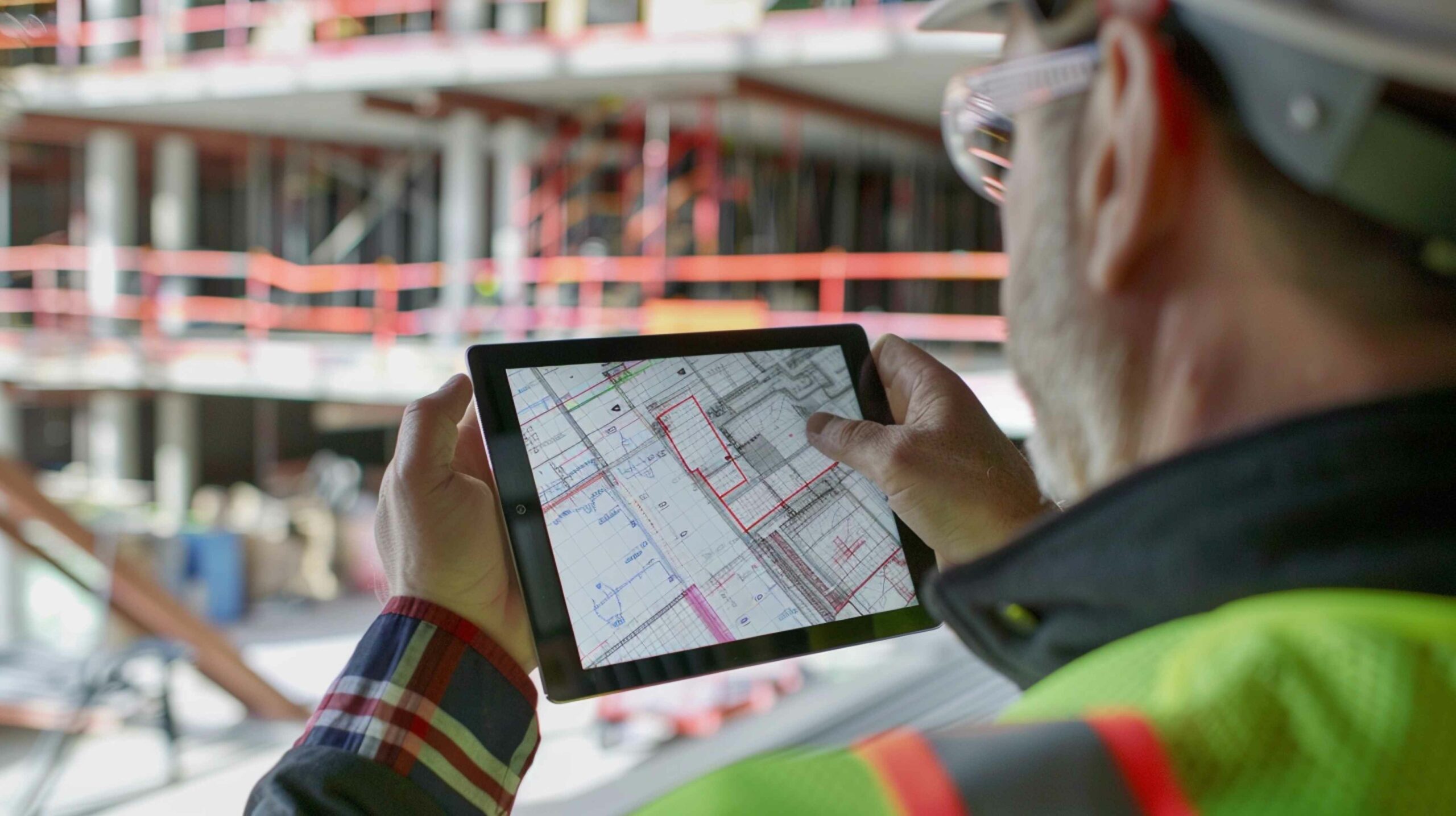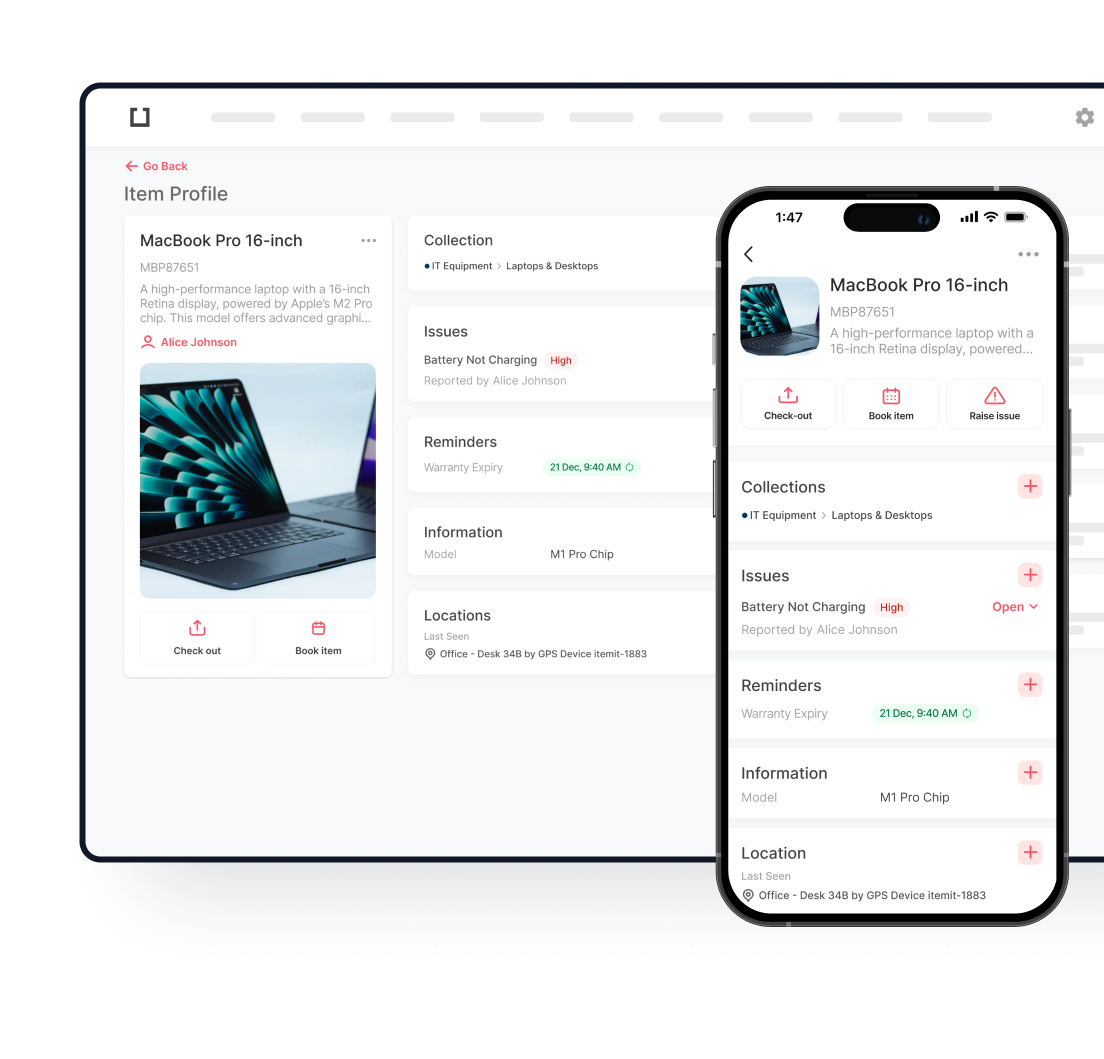Project delays eat into profits faster than anything else in construction. When equipment goes missing or sits idle because nobody knows where it is, budgets take a hit. Scattered tools across job sites create chaos. Workers waste time hunting for what they need instead of building.
Itemit cuts down on paperwork and gives you accurate data without the headaches. Digital tracking transforms how construction companies manage their assets, from the smallest tools to the largest machinery.
Key Takeaways
- Track everything to stop delays and prevent expensive equipment from walking off job sites
- GPS, RFID, and phone apps work together to show you exactly where your stuff is and who has it
- Smart tracking stops theft, gets more work out of your equipment, and keeps machines running longer
- Digital systems beat spreadsheets every time – better decisions, less paperwork, more profit
Construction Inventory Tracking Fundamentals
Managing construction assets means knowing where everything is, all the time. Tools move between workers. Equipment travels from site to site. Materials get delivered and used up. Keeping track of it all? That’s the real challenge.
Construction inventory tracking works differently from a warehouse. Your “inventory” drives down the highway. It sits outside in the rain. Workers take tools home by accident. A $500 drill can disappear as easily as a $50,000 excavator.
The money adds up fast when things go wrong. Stolen equipment means insurance claims and rental fees while you wait for replacements. Missing tools force workers to stand around instead of working. Materials sitting in the wrong place delay entire projects.
Smart contractors use Asset Tags to label everything properly. Each type of asset demands its own approach, from basic identification to sophisticated monitoring systems.
Types of Construction Assets Requiring Tracking
Heavy Equipment and Machinery
Big iron costs big money. Excavators, cranes, dozers – these machines can cost more than houses. Losing one hurts. Construction Equipment Tracking gives you eyes on your fleet, providing real-time visibility into your most valuable assets.
GPS tells you where your equipment sits right now. Geofencing alerts you when something moves without permission. Hour meters track usage for maintenance scheduling. Different machines need different monitoring.
Maintenance scheduling becomes automatic with good tracking. The system knows how many hours each machine has logged. It reminds you when oil changes come due. It tracks warranty periods.
Hand Tools and Power Tools
Power tools walk off sites regularly. Expensive ones deserve individual tracking. Cheaper tools might get tracked in batches – “20 hammers assigned to Site B.”
Check-out systems work like library books. Scan the tool, scan your badge, take what you need. Return it when done. The system knows who has what. Mobile apps make this simple. Workers scan barcodes with their phones.
Materials and Supplies
Lumber, concrete, steel – these materials cost serious money. Knowing what you have prevents over-ordering. Tracking usage helps with job costing. Monitoring storage locations prevents waste.
Weather protection becomes automatic when you track materials properly. The system knows what sits outside. It alerts you before storms hit. Delivery coordination gets easier too.
Consumables and Safety Equipment
PPE, fasteners, fuel – these items get used up instead of returned. Different tracking approach needed here. Focus on consumption rates rather than individual items.
Safety compliance requires careful tracking. Hard hats expire. Safety harnesses need inspections. Tracking systems can handle these requirements automatically. Reorder points prevent stockouts.

Technology Solutions for Construction Inventory Tracking
GPS Tracking Systems
GPS works anywhere cell towers reach. Real-time location updates show equipment positions constantly. Maps display everything at once. Geofencing creates invisible boundaries around job sites. Equipment leaving designated areas triggers immediate alerts.
Modern GPS does more than location. You can Track Your Heavy Construction Equipment wherever it goes, monitoring engine diagnostics that catch problems early. Fuel monitoring prevents theft. Driver behavior tracking improves safety. One device handles multiple functions.
RFID and Barcode Solutions
RFID tags work without line-of-sight scanning. Walk through a storage area with a handheld reader. It catalogs everything automatically. Barcodes cost less but need individual scanning. QR codes work with regular smartphones.
Tag durability matters in construction environments. Industrial tags survive impacts, moisture, and temperature extremes. Placement affects tag survival. Avoid high-wear areas.
Mobile Applications
Smartphones put tracking power in every worker’s pocket. Updates happen instantly. Data stays current. Offline capability keeps things working when cell service fails. Camera integration documents equipment condition.
Voice-to-text reduces typing. Speak your updates instead of hunting and pecking. Accuracy improves. Workers actually use the system instead of avoiding it.
Cloud-Based Platforms
Cloud storage means access from anywhere. Office computer. Job site tablet. Home laptop. Same data everywhere. Automatic backups protect against data loss. Scalability handles business growth.
Integration connects with existing software. Accounting systems pull cost data automatically. Project management tools show equipment assignments. Everything works together.
Implementing Inventory Control Systems
Start by figuring out what you actually need. Walk your sites. Talk to workers. Identify the biggest pain points. Don’t try to solve everything at once.
Pick systems that grow with your business. What works for 10 employees might not work for 100. Training determines success more than technology. The fanciest system fails if nobody uses it properly.
Implementation Steps:
- Assess current processes – Document how things work now
- Identify improvement opportunities – Find the biggest problems first
- Select appropriate technology – Match solutions to actual needs
- Plan phased rollout – Start small, expand gradually
- Train all users thoroughly – Invest in education upfront
Change management makes or breaks implementation. People resist new systems naturally. Address concerns honestly. Show benefits clearly. Pilot programs prove concepts before full deployment.
Asset Management in Construction Best Practices
Standardization Protocols
Everyone needs to speak the same language. Equipment numbers should follow consistent patterns. Status descriptions mean the same thing across all sites. Data entry formats stay uniform.
Standardization Checklist:
- Numbering schemes – Logical, expandable patterns
- Status definitions – Clear, unambiguous descriptions
- Location codes – Consistent site identification
- Category classifications – Logical groupings that make sense
Cross-site transfers become seamless with standardization. Workers understand systems regardless of location. Equipment moves smoothly between projects.
Regular Audit Procedures
Count everything regularly. High-value items need daily verification. Lesser items can be checked weekly or monthly. Surprise audits catch problems early.
Digital tools speed up audits dramatically. Barcode scanners read tags instantly. Mobile apps update records in real-time. Document everything. Photo damage. Record serial numbers.
Maintenance Integration
Preventive maintenance saves money compared to emergency repairs. Track usage to trigger service intervals. Don’t wait for breakdowns. Stay ahead of problems. Service history affects resale value significantly. Complete maintenance records demonstrate proper care while identifying recurring problems requiring attention.
Warranty tracking protects your investment. Systems can alert you before coverage expires. Schedule warranty work proactively. Don’t leave money on the table by missing warranty deadlines. Proper tracking helps increase construction equipment’s lifespan through timely maintenance and care.

The Role of Construction Audit in Inventory Management
Construction audits do more than just count things. They verify system accuracy. They ensure compliance with procedures. They identify areas needing improvement.
Frequency depends on risk and value. Million-dollar machines deserve daily attention. Box of screws can wait a week. Physical counts must match system records.
Digital audit trails provide accountability. Who moved what when? Systems track every transaction automatically. Random spot checks keep everyone honest.
Performance metrics track audit effectiveness. Accuracy percentages show system health. Error rates indicate training needs. Documentation supports compliance requirements.
Overcoming Common Implementation Challenges
Technology Adoption Barriers
Workers fear technology will make their jobs harder. Address concerns directly. Show how systems actually save time. Training reduces resistance. People fear what they don’t understand.
Start with enthusiastic early adopters. Let them become internal champions. Keep systems simple initially. Add complexity gradually as users gain confidence.
Multi-Site Coordination
Communication becomes critical with multiple locations. Establish clear protocols. Regular meetings keep everyone aligned.
Multi-Site Success Factors:
- Standardized procedures – Same methods everywhere
- Regular communication – Scheduled coordination meetings
- Clear responsibilities – Who does what, when
- Data synchronization – Real-time updates across sites
Cost Justification
Calculate the real costs of current problems. How much does theft cost annually? What about time wasted searching for tools? Numbers build compelling business cases.
ROI timelines vary by implementation scope. Simple barcode systems pay back quickly. Comprehensive GPS solutions take longer but provide greater benefits.
Measuring Success and ROI
Track the right metrics. Theft reduction shows security improvements. Utilization rates indicate efficiency gains. Maintenance costs reveal operational impacts. Customer satisfaction scores often improve with better inventory management.
Before and after comparisons prove value. Document baseline conditions. Measure improvements objectively. Productivity gains often exceed direct savings. Workers spend less time searching for tools. Projects finish faster. Customer relationships strengthen through reliable delivery.
Key Performance Indicators:
- Theft reduction percentage – Fewer assets going missing
- Equipment utilization rates – More productive hours per asset
- Maintenance cost trends – Lower emergency repair expenses
- Project completion times – Faster delivery through better resource management
Long-term benefits include extended asset life and improved planning accuracy. Regular reporting keeps stakeholders informed.
Future Trends in Construction Inventory Management
Artificial intelligence will revolutionize inventory decisions. Machine learning analyzes usage patterns. Voice commands will simplify system interaction. “Where’s excavator 12?” Natural language queries eliminate interface complexity.
Blockchain technology promises secure record-keeping. Tamper-proof transaction logs. Augmented reality will overlay information on real-world views. Point the phone at the equipment to see maintenance history.
Sustainability metrics will gain importance. Carbon footprint tracking. Energy usage monitoring. Integration depth will increase. Systems will communicate more seamlessly.
Drone integration will revolutionize site surveys. Automated inventory counts from aerial photography. Real-time progress monitoring. Security surveillance capabilities. Thermal imaging for equipment condition assessment. Drones will handle dangerous or time-consuming inspection tasks automatically.
Wearable technology will connect workers directly to inventory systems. Smart helmets with heads-up displays. Voice-activated queries and updates. Biometric authentication for tool checkout. Fall detection is linked to equipment location. The boundary between worker and system will blur for better safety and efficiency.
Next Steps
Smart construction inventory tracking transforms operations. Equipment stays where it belongs. Workers find what they need quickly. Projects finish on time and under budget.
The technology exists today to solve most tracking problems. Success requires commitment beyond just buying software. Start small but think big. Prove value with limited implementations.
The competitive advantage goes to companies that embrace these tools effectively. Better information enables better decisions. Smart tracking builds sustainable business success. Early adopters gain market advantages while laggards struggle with outdated methods. The future belongs to data-driven construction companies.
Market differentiation becomes possible through superior operations. Clients notice when projects finish on time and under budget. Word spreads about contractors who deliver reliably. Premium pricing becomes justified through proven performance. Success breeds more success in the construction industry.
itemit streamlines construction inventory management by replacing time-consuming manual processes with automated tracking. The platform reduces human error through real-time data updates, helping teams locate equipment faster and maintain accurate records without constant manual input. Workers can quickly scan assets using mobile devices, while managers access current inventory status from any location.
The system handles maintenance scheduling automatically and creates digital records that satisfy audit requirements. Most teams find the interface straightforward enough to use effectively within days rather than weeks. By shifting from reactive problem-solving to proactive asset management, companies typically see measurable improvements in equipment utilization and project efficiency.

Try itemit
Choose a better way to track
your assets.
Start your free 14-day trial now!
Frequently Asked Questions
What's the difference between a construction inventory management system and basic tracking?
Basic tracking just tells you where things are. Full management systems handle maintenance schedules, cost tracking, compliance records, and performance analytics.
How often should construction audits be performed?
Expensive equipment needs daily checks. Tools and smaller items can be audited weekly. Complete site audits monthly. Adjust frequency based on theft risk and asset value.
Can small construction companies benefit from digital tracking systems?
Absolutely. Small companies often see faster payback because they have tighter margins. Even basic barcode systems prevent enough loss to justify costs quickly.
What's the typical ROI timeline for construction inventory tracking?
Most companies break even within six months through reduced theft and better utilization. Full ROI usually happens within 12-18 months.
How does GPS tracking integrate with existing construction management software?
Modern systems connect through APIs – basically digital bridges between programs. Data flows automatically between asset tracking and project management software.

Keep Learning
itemit Blog
Tips, guides, industry best practices, and news.
How to Create an Effective Construction Management Plan for Your Project
Create an effective construction management plan that improves safety, minimises delays and keeps your project organised and on track from planning to completion.
A Complete Guide to Construction Cost Management and Planning
Effective construction cost management and planning improve profitability, enhance financial stability, and strengthen resource allocation across every project.
Key Strategies for Successful Construction Business Development
Smart strategies for construction business development that help attract clients, increase project success, and drive sustainable growth in a competitive market.



